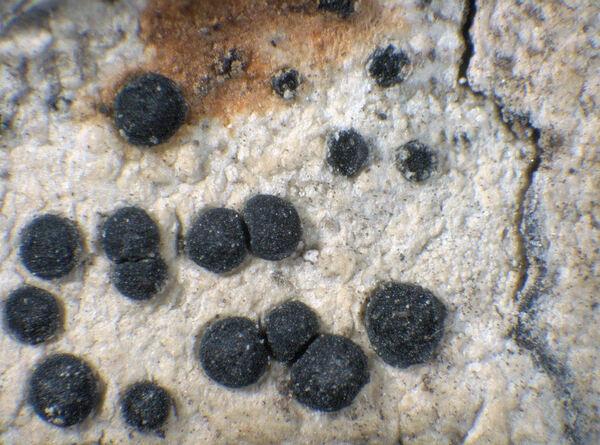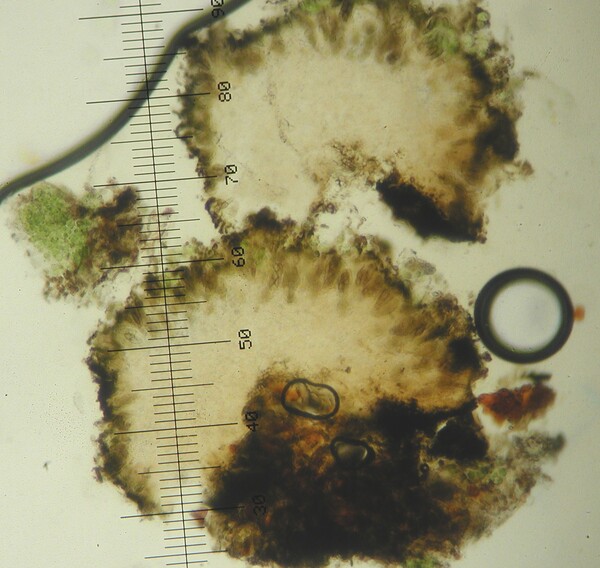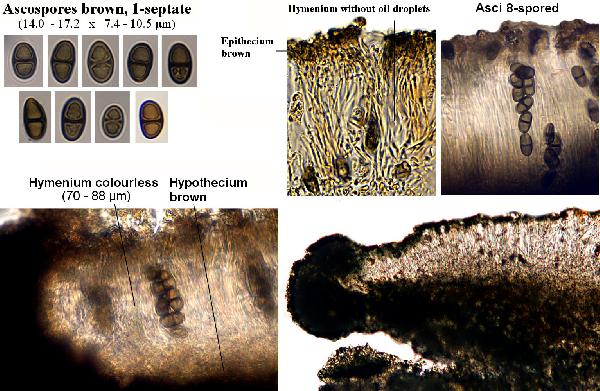Buellia erubescens Arnold
Verh. zool.-bot. Ges. Wien, 25: 493, 1875.
Synonyms: Buellia jorgei Samp.; Buellia zahlbruckneri J. Steiner non sensu T. Schauer
Distribution: C - Tosc (Benesperi & al. 2007), Umb (Ravera 2000, Ravera & al. 2006), Laz (Ruisi & al. 2005), Mol (Nimis & Tretiach 1999, Caporale & al. 2008). S - Camp (Garofalo & al. 1999, 2010, Aprile & al. 2003b), Cal (Puntillo 1996, Incerti & Nimis 2006).
Description: Thallus crustose, episubstratic, smooth to rimose, white to whitish grey, often delimited by a black prothalline line. Medulla white, lacking calcium oxalates, I- Apothecia lecideine, black, (0.3-)0.5-1.2(-1.6) mm across, sessile, with a flat to convex, often pruinose disc, and an initially thick, later thinner and finally excluded proper margin. Proper exciple well developed, 80-125 μm wide in lower part, brown throughout, Dispersa-type, of radially arranged hyphae, the inner part of long-celled, parallel, strongly agglutinated and thick-walled hyphae, the outer part of short-celled, isodiametric hyphae without intercellular spaces, N-, K+ yellow or K+ yellow then red (red crystals); epithecium brown, N-, in pruinose specimens inspersed with crystals reacting K+ red; hymenium colourless, not inspersed with oil droplets, (80-)100-110 µm high; paraphyses simple to sparingly branched, the apical cells slightly swollen, 2-4 μm wide, with a dark cap. Asci 8-spored, clavate to cylindrical-clavate, the apical dome K/I+ dark blue with a pale, conical-pointed apical cushion (axial mass), the wall I-, but the thin outer gel I+ blue, Bacidia-type. Ascospores 1-septate, not constricted at septum, brown, ellipsoid to broadly ellipsoid with rounded apices, not curved, (10-)13-18(-20) x (6-)7-8.5(-9.5) µm, Physconia-type when young, Buellia-type when mature, with a rough to faint microrugulate ornamentation. Pycnidia rare, black, immersed. Conidia bacilliform, 6-9 x 0.5-1 µm. Photobiont chlorococcoid. Spot tests: K+ yellow or K+ yellow-orange turning red, C-, KC-, P- or P+ faintly yellow, UV-. Chemistry: chemotype 1) atranorin, norstictic and connorstictic acids, plus traces of salazinic and hyposalazinic acids, zeorin and an unknown secalonic acid derivative; chemotype 2) atranorin, traces of norstictic and connorstictic acids, and of a secalonic acid derivative.Note: on acid and smooth bark in warm-humid areas. All earlier records of this species from upland areas of the Alps and of the Northern Apennines (see Nimis 1993: 138) are attributed to Tetramelas chloroleucus following Giralt & al. (2000); some records could refer to the recently-described B. iberica. It is included in the Italian red list of epiphytic lichens as “Data Deficient” (Nascimbene & al. 2013c).
Growth form: Crustose
Substrata: bark
Photobiont: green algae other than Trentepohlia
Reproductive strategy: mainly sexual
Poorly known taxon in need of further study
Commonnes-rarity: (info)
Alpine belt: absent
Subalpine belt: absent
Oromediterranean belt: absent
Montane belt: extremely rare
Submediterranean belt: extremely rare
Padanian area: absent
Humid submediterranean belt: very rare
Humid mediterranean belt: very rare
Dry mediterranean belt: absent

Predictive model
Herbarium samples
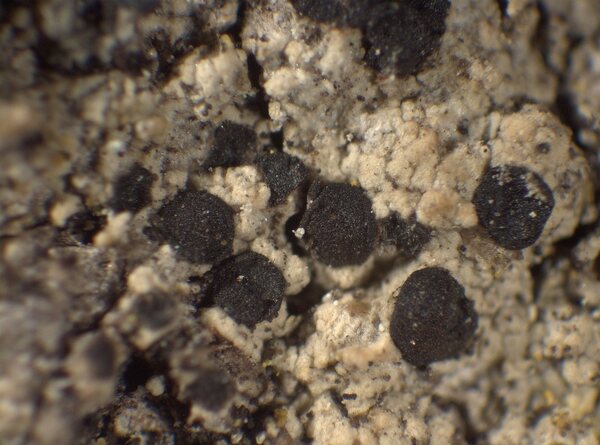

E. Pittao; Owner: Department of Life Sciences, University of Trieste
Herbarium: TSB (26662)
2008.03.31
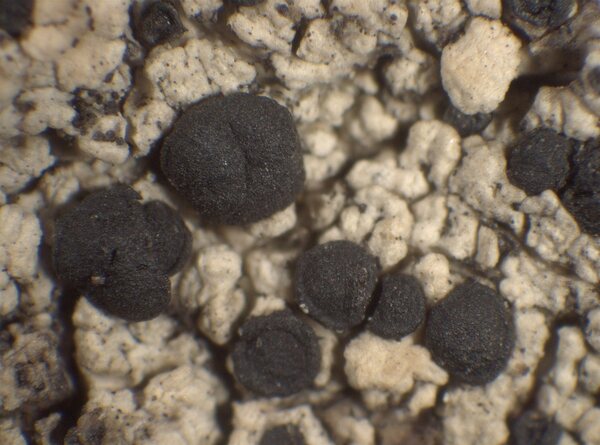

E. Pittao; Owner: Department of Life Sciences, University of Trieste
Herbarium: TSB (33232)
2008.03.31
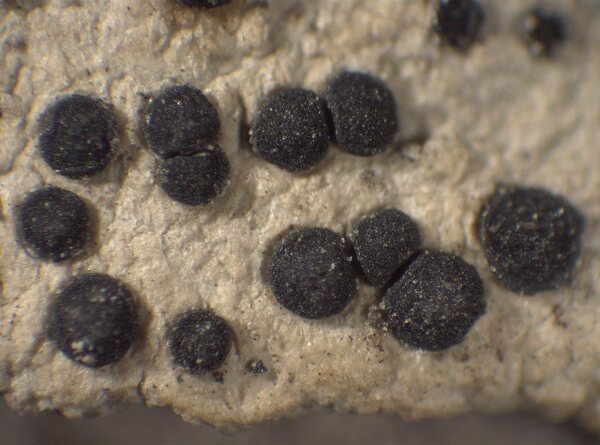

E. Pittao; Owner: Department of Life Sciences, University of Trieste
Herbarium: TSB (12164)
2008.03.31
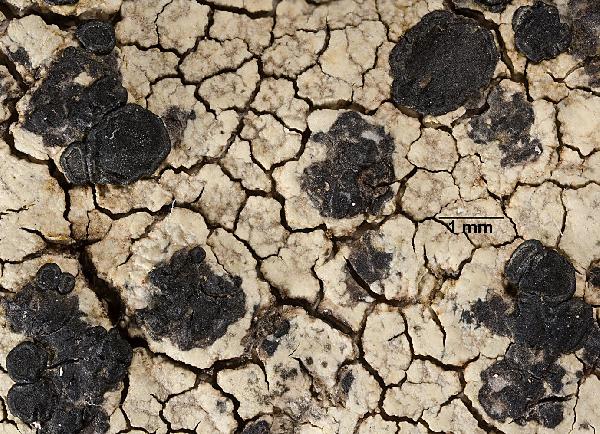
Ulrich Kirschbaum CC BY-SA 4.0 - Source: https://www.thm.de/lse/ulrich-kirschbaum/flechtenbilder
On Juglans regia.
Portugal; NW-Madeira; ese of Boca da Encumeada: Ribeira do Poço (Grass Bridge).
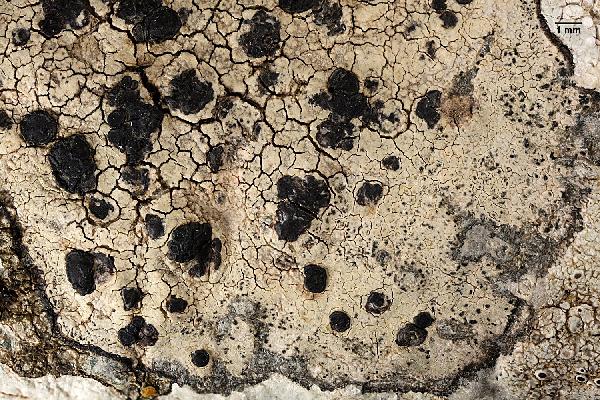
Ulrich Kirschbaum CC BY-SA 4.0 - Source: https://www.thm.de/lse/ulrich-kirschbaum/flechtenbilder
On Juglans regia.
Portugal; NW-Madeira; ese of Boca da Encumeada: Ribeira do Poço (Grass Bridge).
Growth form: Crustose
Substrata: bark
Photobiont: green algae other than Trentepohlia
Reproductive strategy: mainly sexual
Poorly known taxon in need of further study
Commonnes-rarity: (info)
Alpine belt: absent
Subalpine belt: absent
Oromediterranean belt: absent
Montane belt: extremely rare
Submediterranean belt: extremely rare
Padanian area: absent
Humid submediterranean belt: very rare
Humid mediterranean belt: very rare
Dry mediterranean belt: absent

Predictive model
| Herbarium samples |


E. Pittao; Owner: Department of Life Sciences, University of Trieste
Herbarium: TSB (26662)
2008.03.31


E. Pittao; Owner: Department of Life Sciences, University of Trieste
Herbarium: TSB (33232)
2008.03.31


E. Pittao; Owner: Department of Life Sciences, University of Trieste
Herbarium: TSB (12164)
2008.03.31

Ulrich Kirschbaum CC BY-SA 4.0 - Source: https://www.thm.de/lse/ulrich-kirschbaum/flechtenbilder
On Juglans regia. Portugal; NW-Madeira; ese of Boca da Encumeada: Ribeira do Poço (Grass Bridge).

 INDEX FUNGORUM
INDEX FUNGORUM
 GBIF
GBIF
 DOLICHENS
DOLICHENS
